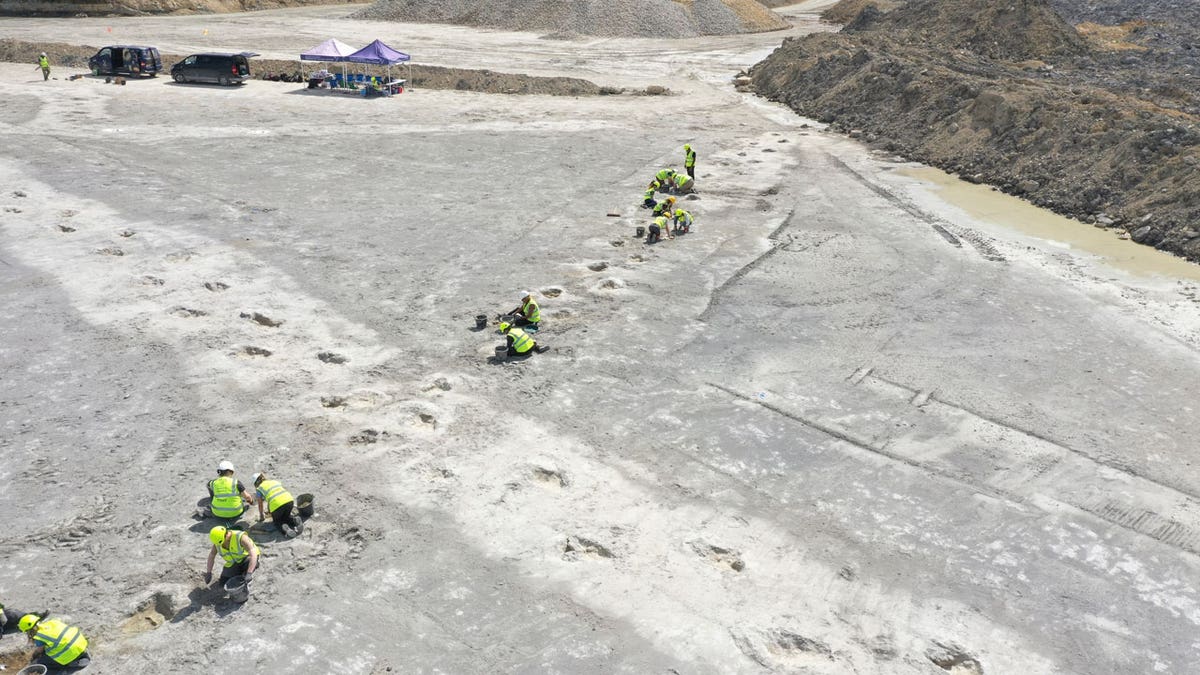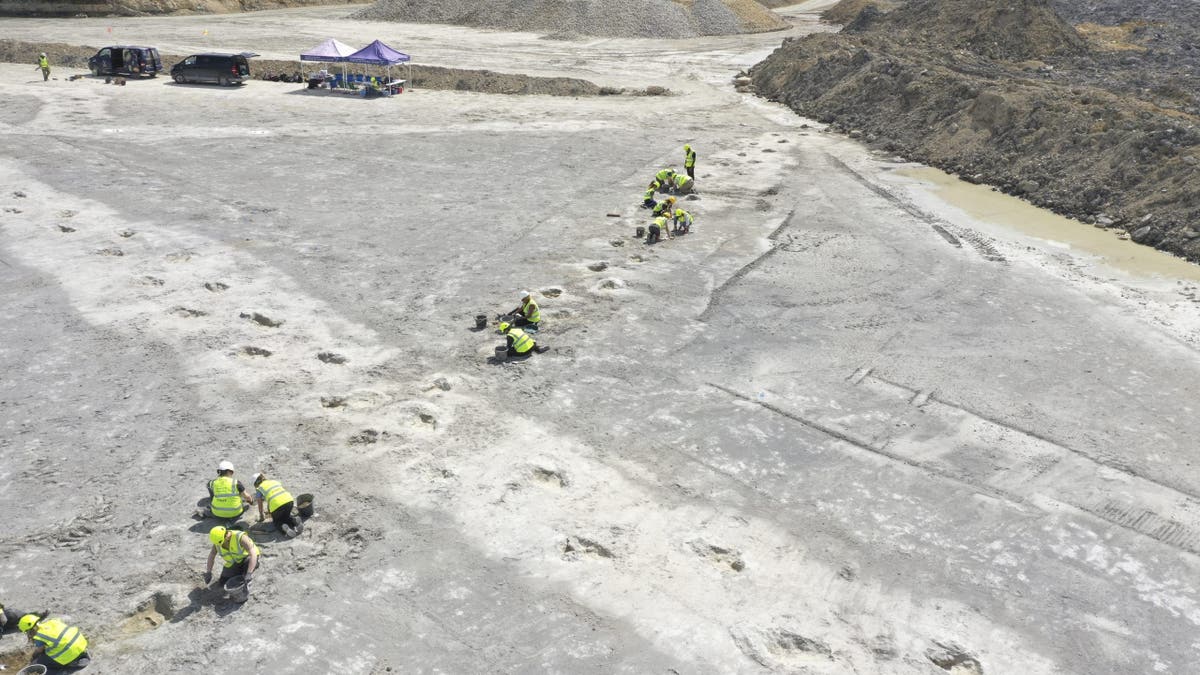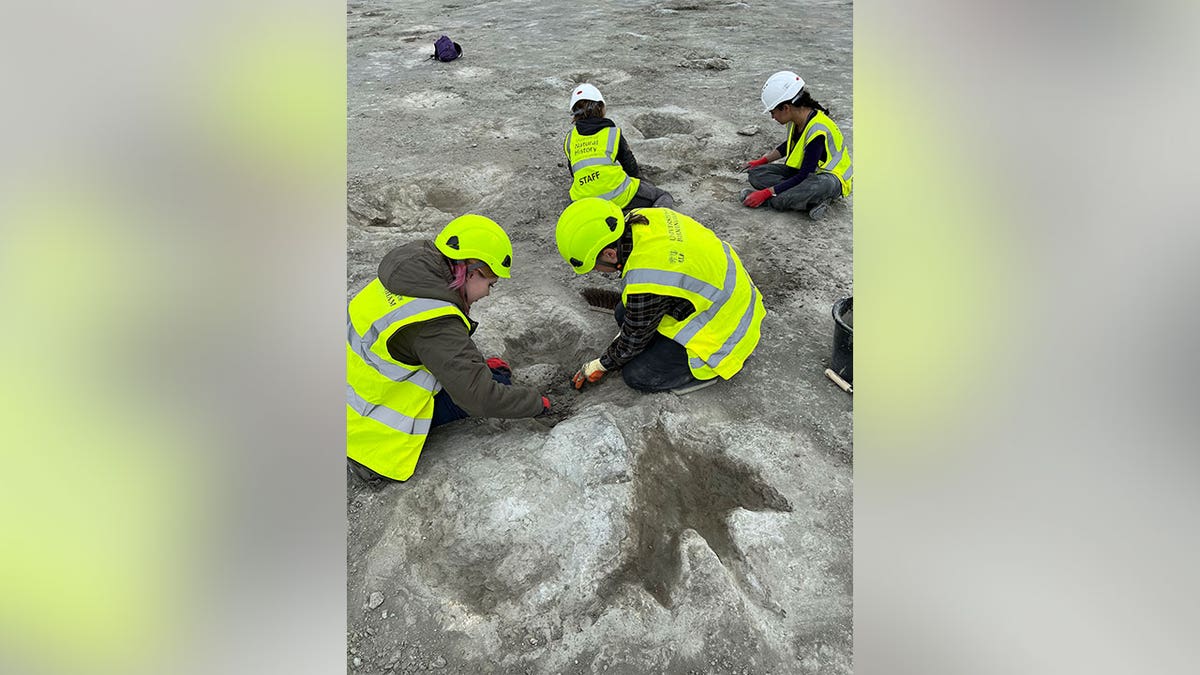A remarkable discovery in a southern England quarry has unveiled a "dinosaur highway" featuring nearly 200 footprints dating back an astounding 166 million years. The find, made during a clay excavation at the Dewars Farm Quarry in Oxfordshire, involved a team of over 100 individuals and has significantly expanded our understanding of the Middle Jurassic period.
Initially, a worker noticed unusual bumps in the clay, which prompted further investigation. This led to the uncovering of five extensive trackways, four of which belonged to massive, long-necked herbivores known as sauropods, likely Cetiosaurus, reaching lengths of up to 60 feet. The fifth set of tracks belonged to the Megalosaurus, a fearsome 30-foot predator and the first dinosaur to be scientifically classified two centuries ago. The Megalosaurus tracks, distinguished by their triple-claw imprint, intersect with the sauropod tracks, raising intriguing questions about potential interactions between these prehistoric giants.

This discovery builds upon earlier paleontological work in the region and offers a unique glimpse into the lives of these ancient creatures. Researchers from the Universities of Oxford and Birmingham emphasize the exceptional preservation of the tracks, allowing scientists to observe how the mud deformed under the dinosaurs' weight. This level of detail, combined with other fossilized evidence like burrows, shells, and plants, paints a vivid picture of the muddy lagoon environment these dinosaurs inhabited.

The team meticulously documented their findings with over 20,000 digital images and 3D models created using drones. This extensive documentation will prove invaluable for future research, potentially revealing insights into the dinosaurs' size, gait, and speed. While a similar discovery of 40 footprints was made in the area nearly 30 years ago, limited photographic evidence from that pre-digital era hampered further study. This new find, with its comprehensive digital record, offers a wealth of data for future paleontological investigations.

This remarkable "dinosaur highway" will be showcased in a new exhibit at the Oxford University Museum of Natural History and featured on the BBC's "Digging for Britain" program.








